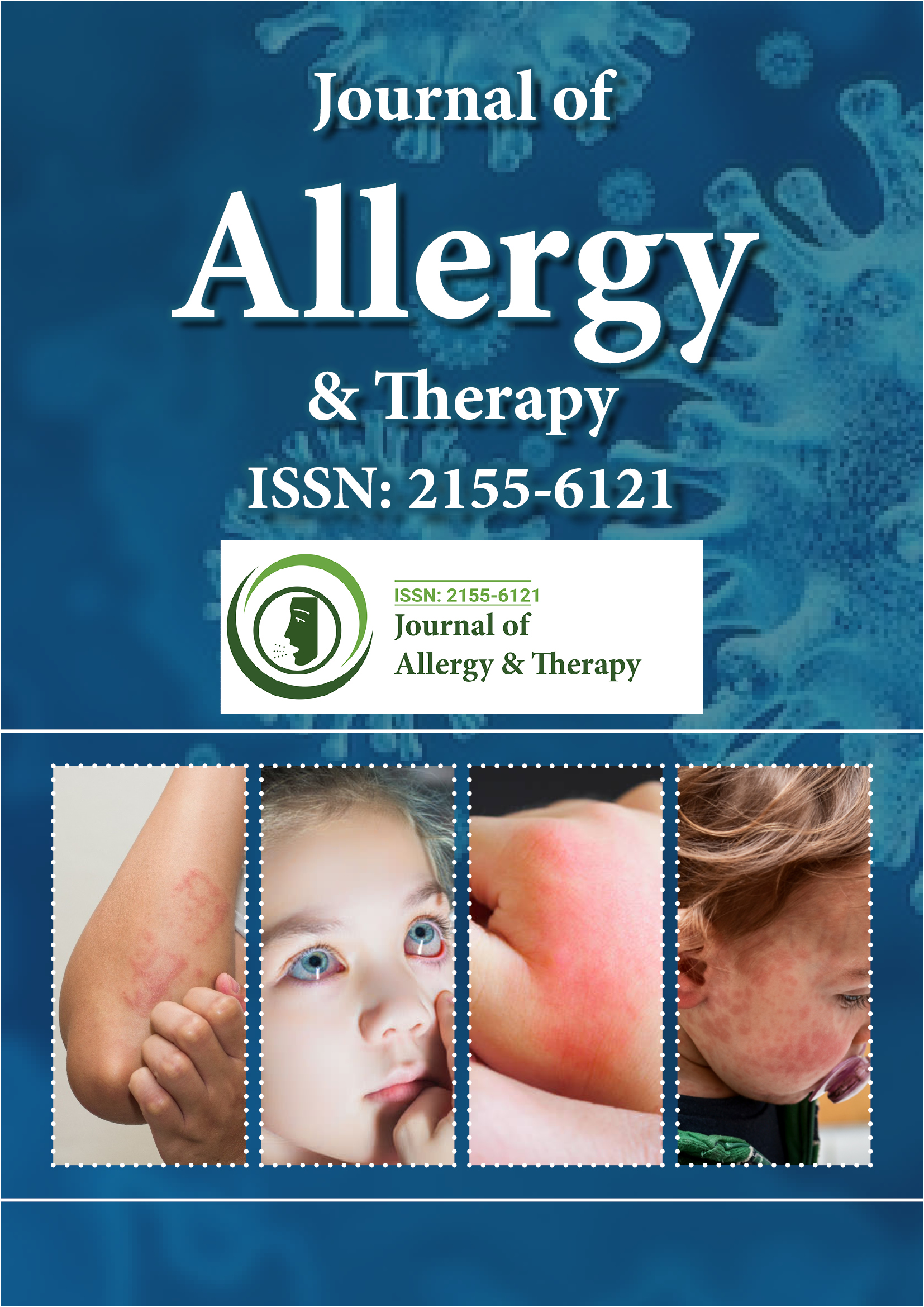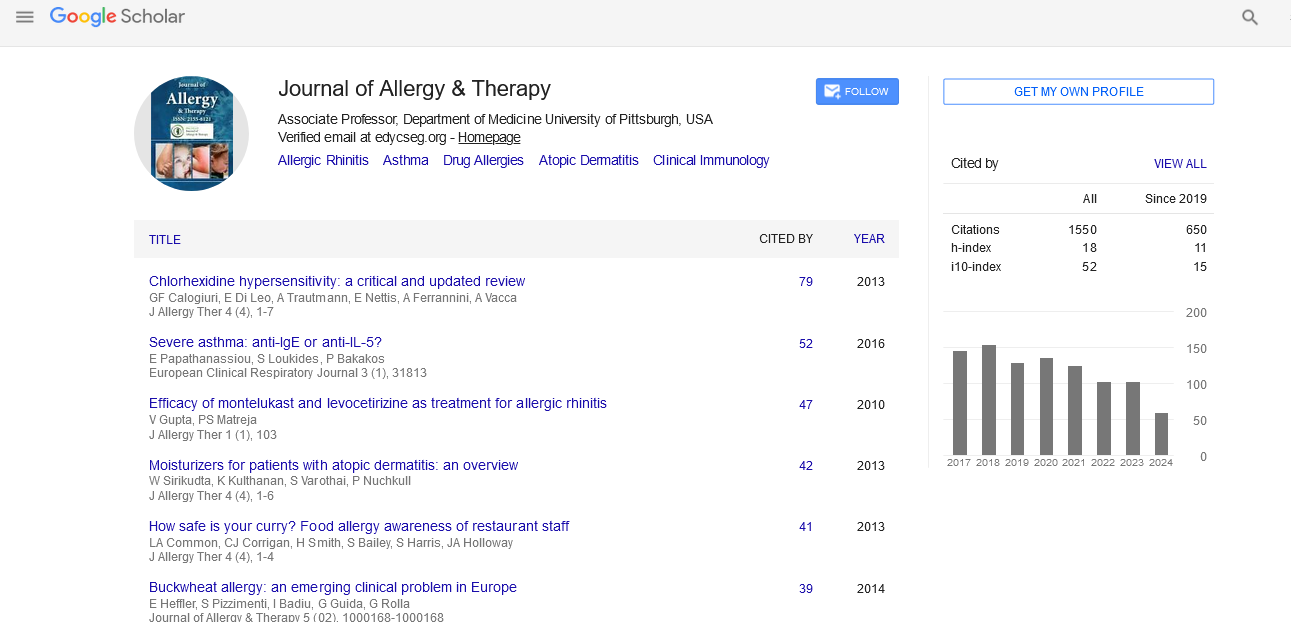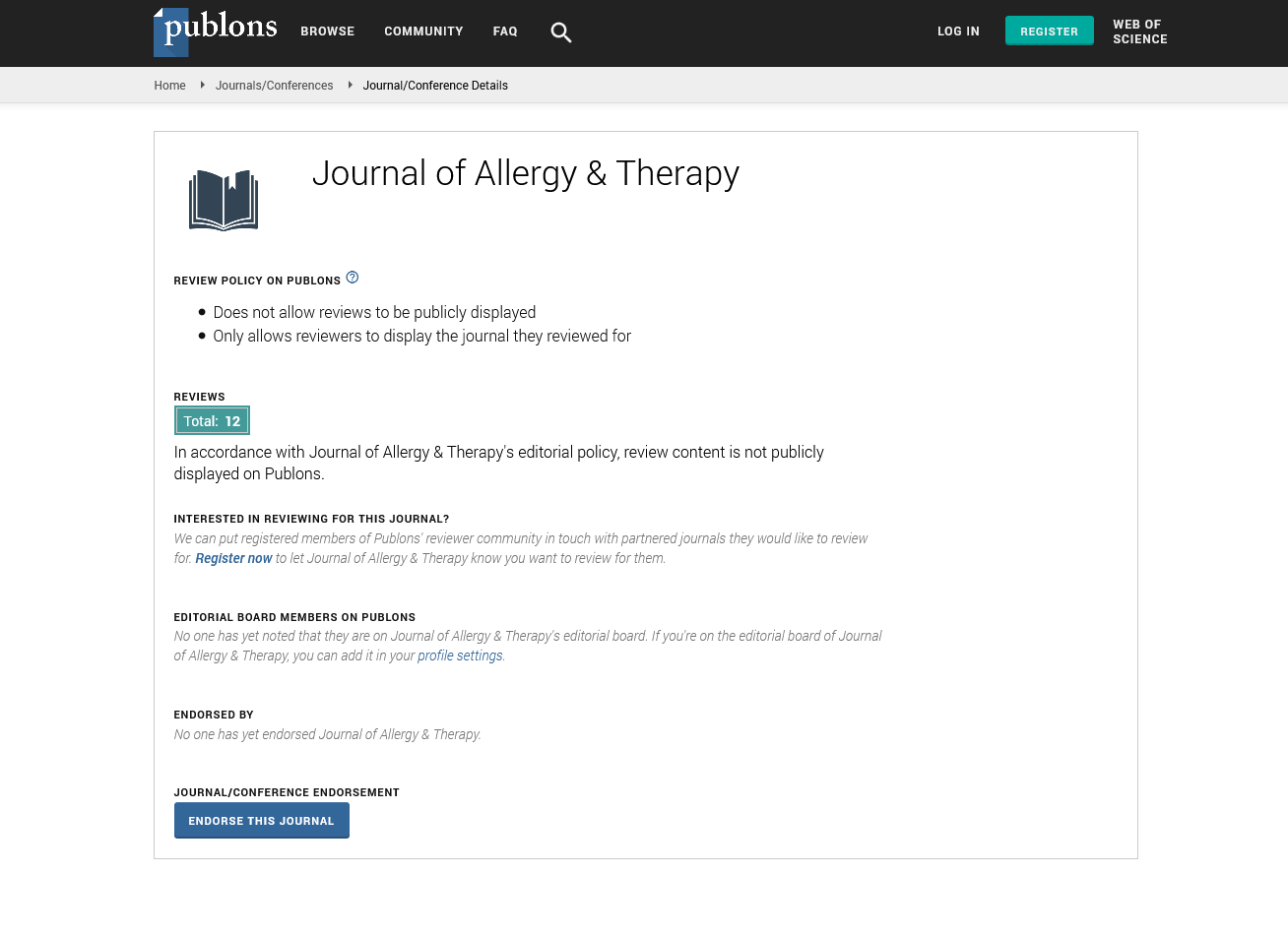PMC/PubMed Indexed Articles
Indexed In
- Academic Journals Database
- Open J Gate
- Genamics JournalSeek
- Academic Keys
- JournalTOCs
- China National Knowledge Infrastructure (CNKI)
- Ulrich's Periodicals Directory
- Electronic Journals Library
- RefSeek
- Hamdard University
- EBSCO A-Z
- OCLC- WorldCat
- SWB online catalog
- Virtual Library of Biology (vifabio)
- Publons
- Geneva Foundation for Medical Education and Research
- Euro Pub
- Google Scholar
Useful Links
Share This Page
Journal Flyer

Open Access Journals
- Agri and Aquaculture
- Biochemistry
- Bioinformatics & Systems Biology
- Business & Management
- Chemistry
- Clinical Sciences
- Engineering
- Food & Nutrition
- General Science
- Genetics & Molecular Biology
- Immunology & Microbiology
- Medical Sciences
- Neuroscience & Psychology
- Nursing & Health Care
- Pharmaceutical Sciences
Perspective - (2023) Volume 14, Issue 6
Implications for Diagnosis and Immunotherapeutic Approaches on the Role of Allergens Originating from House Dust Mites
Sakaguchi Matsukawa*Received: 27-Nov-2023, Manuscript No. JAT-23-24384 ; Editor assigned: 30-Nov-2023, Pre QC No. JAT-23-24384 (PQ); Reviewed: 14-Dec-2023, QC No. JAT-23-24384 ; Revised: 21-Dec-2023, Manuscript No. JAT-23-24384 (R); Published: 30-Dec-2023, DOI: 10.35248/2155-6121.23.14.369
Description
House Dust Mites (HDMs) are microscopic organisms found in the dust of homes, particularly in bedding, upholstered furniture, and carpets. For individuals with allergies, exposure to house dust mite allergens can trigger a range of respiratory and dermatological symptoms. This essay explores the significance of house dust mite allergens in the diagnosis of allergies and the implementation of immunotherapeutic strategies. Understanding the importance of HDMs is essential for healthcare professionals seeking to provide effective and personalized care for individuals suffering from allergic reactions.
Prevalence of house dust mite allergies
House dust mite allergies are prevalent worldwide, affecting a substantial portion of the population. Common symptoms include sneezing, nasal congestion, itchy or watery eyes, coughing, and skin rashes. Identifying the specific allergens responsible for these symptoms is significant for accurate diagnosis and targeted treatment.
Skin prick tests: Among the most common diagnostic methods for HDM allergies, skin prick tests involve introducing small amounts of HDM allergens into the skin and observing for an allergic reaction.
Blood tests (Specific IgE): Measurement of specific IgE antibodies in the blood against HDM allergens provides another diagnostic approach.
Association with respiratory conditions:
House dust mite allergens are strongly associated with respiratory conditions such as allergic rhinitis and asthma. Understanding a patient's sensitivity to HDMs is instrumental in managing these conditions effectively.
Allergen-Specific Immunotherapy (AIT)
Subcutaneous Immunotherapy (SCIT): Involves injecting gradually increasing doses of HDM allergens under the skin to induce immune tolerance.
Sublingual Immunotherapy (SLIT): Administering HDM allergens in the form of oral drops or tablets under the tongue.
Mechanism of immunotherapy
Immunotherapy works by exposing the immune system to controlled amounts of HDM allergens, gradually desensitizing the individual and reducing the severity of allergic reactions over time. This approach modifies the immune response, shifting it from an allergic to a tolerant state.
Numerous studies have demonstrated the efficacy of immunotherapy in reducing symptoms and medication reliance in individuals with house dust mite allergies. Long-term benefits include sustained relief even after the completion of the treatment.
A personalized approach to immunotherapy is emerging, effective treatment plans based on individual patient profiles. This includes identifying specific allergens causing the allergic reactions and customizing immunotherapy accordingly.
Adherence to treatment: Successful immunotherapy requires strict adherence to the treatment schedule. Factors such as the duration of treatment and the need for regular clinic visits may pose challenges for some individuals.
Cost and accessibility: The cost of immunotherapy and its accessibility can be barriers for certain populations. Efforts to make this form of treatment more affordable and widely available are essential for maximizing its impact.
Safety and side effects: While generally safe, immunotherapy may have side effects, ranging from local reactions at the injection site to systemic reactions. Close monitoring and proper medical supervision are important to ensuring patient safety.
Conclusion
The importance of house dust mite allergens in the diagnosis and immunotherapy of allergic conditions cannot be overstated. Accurate diagnosis through appropriate testing enables targeted treatment strategies, including allergen-specific immunotherapy. As research continues to unveil the intricate mechanisms of allergic responses, personalized approaches to immunotherapy for more effective and accessible allergy management.
Healthcare professionals play a major role in patients about the significance of house dust mite allergens, guiding them through diagnostic processes, and facilitating informed decisions regarding immunotherapeutic interventions. Ultimately, integrating the understanding of house dust mite allergens into clinical practice empowers healthcare providers to offer comprehensive and personalized care for individuals affected by these common and impactful allergies.
Citation: Matsukawa S (2023) Implications for Diagnosis and Immunotherapeutic Approaches on the Role of Allergens Originating from House Dust Mites. J Allergy Ther. 14:369.
Copyright: © 2023 Matsukawa S. This is an open access article distributed under the terms of the Creative Commons Attribution License, which permits unrestricted use, distribution, and reproduction in any medium, provided the original author and source are credited.


